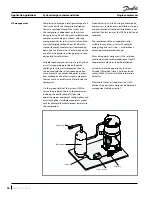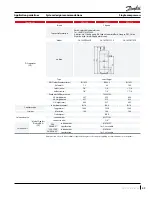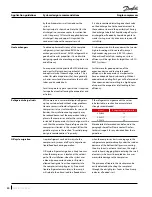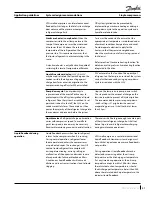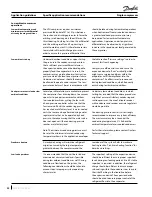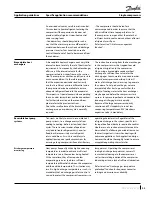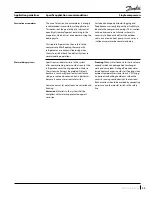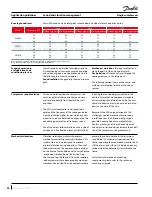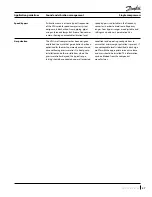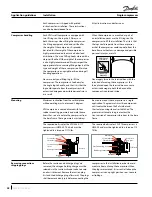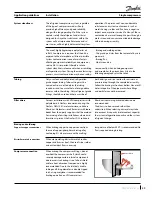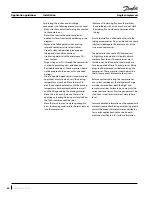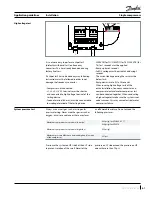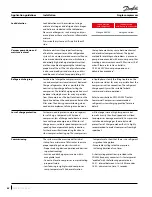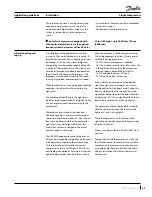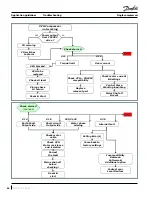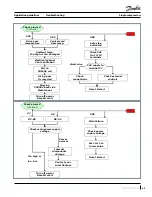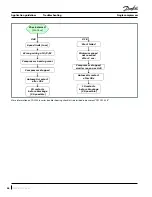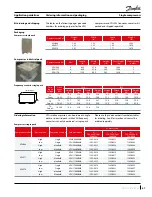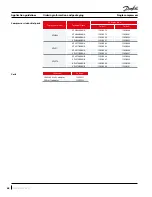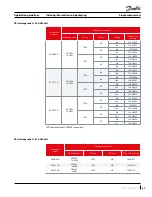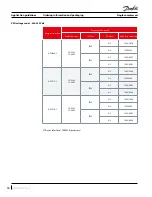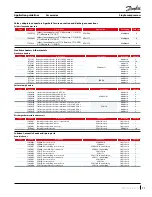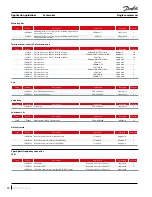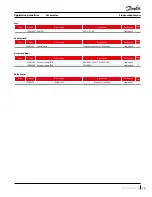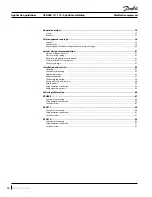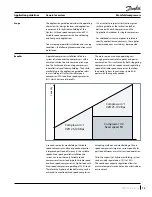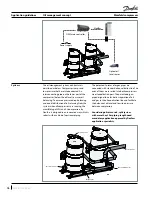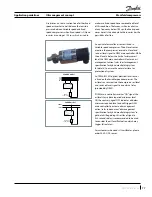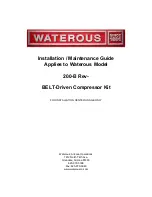
Application guidelines
62
FRCC.PC.023.A7.22
Single compressors
Installation
Leak detection
Leak detection must be carried out using a
mixture of nitrogen and refrigerant or nitrogen
and helium, as indicated in the table below.
Never use other gasses such as oxygen, dry air
or acetylene as these may form an inflammable
mixture.
Pressurize the system on HP side first then LP
side.
Leak detection
with refrigerant
Leak detection
with a mass spectrometer
Nitrogen & R410A
Nitrogen & Helium
Vacuum pump down and
moisture removal
Refrigerant charging
Moisture obstructs the proper functioning
of both the compressor and the refrigeration
system. Air and moisture reduce service life and
increase condensation pressure, which causes
abnormally high discharge temperatures that
are then capable of degrading the lubricating
properties of the oil. The risk of acid formation
is also increased by air and moisture, and this
condition can also lead to copper plating. All
these phenomena may cause both mechanical
and electrical compressor failures. The typical
method for avoiding such problems is a vacuum
pump-down executed with a vacuum pump, thus
creating a minimum vacuum of 500 microns (0.67
mbar). Please refer to News bulletin
Tl1-026-0302 “Vacuum pump down and
dehydration procedure”.
For the initial charge the compressor must not
run and eventual service valves must be closed.
Charge refrigerant as close as possible to the
nominal system charge before starting the
compressor. This initial charging operation must
be done in liquid phase as far away as possible
from the compressor. The best location is on the
liquid line between the condenser outlet and the
filter drier. Then during commissioning, when
needed, a complement of charge can be done
in liquid phase: slowly throttling liquid in on the
low pressure side as far away as possible from the
compressor suction connection. The refrigerant
charge quantity must be suitable for both
summer and winter operations.
Refer to news bulletin FRCC.EN.050 “Danfoss
Commercial Compressors recommended
refrigerant system charging practice” for more
details.
Loss of charge protection
Customer need to protect compressor against
loss of charge. Compared with fix speed
compressor, loss of charge could be more severe
to variable speed compressors. When loss of
charge occurs, variable speed compressors will
speed up to compensate capacity reduction,
Further drive will active derating function to
slow compressor heating up. Thus compressors
will run longer time at high temperature but
low oil viscosity than fixed speed and will lead
to compressor damage eventually. Low pressure
switch and discharge gas thermostat could
protect loss of charge somehow. But it is highly
recommended to protect compressor from high
superheat.
Commissioning
The system must be monitored after initial
startup for a minimum of 60 minutes to ensure
proper operating characteristics such as:
• Proper metering device operation and desired
superheat readings
• Suction and discharge pressure are within
acceptable levels
• Correct oil level in compressor sump indicating
proper oil return
• Low foaming in sight glass and compressor
sump temperature 10K above saturation
temperature to show that there is no refrigerant
migration taking place
• Acceptable cycling rate of compressors,
including duration of run times.
A short cycling protection is provided in the
CDS303 frequency converter. It is factory preset
“enabled” with the following parameters in:
28.01 - interval between 2 starts: 300 secondes
28.02 - minimum run time: 12 seconds.

